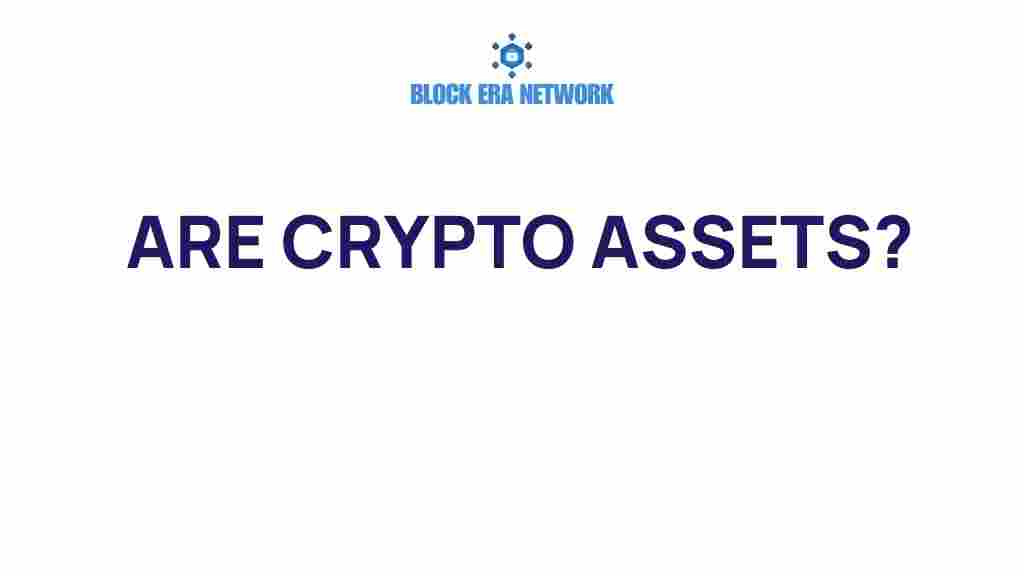What Are Crypto Assets?
In recent years, the term crypto assets has gained significant traction, becoming a buzzword in financial and technological circles alike. But what are crypto assets, and why do they matter?
Crypto assets refer to digital or virtual assets that use cryptography for security. They operate on decentralized networks, primarily leveraging blockchain technology. From cryptocurrencies like Bitcoin to non-fungible tokens (NFTs), crypto assets are reshaping the way we perceive and utilize value.
Types of Crypto Assets
The realm of crypto assets encompasses various types, each serving unique purposes. Below is a breakdown of the most prominent categories:
- Cryptocurrencies: The most well-known crypto assets, such as Bitcoin and Ethereum, are primarily used as digital currencies or stores of value.
- Utility Tokens: These grant users access to specific services or platforms. Examples include Basic Attention Token (BAT) and Filecoin.
- Stablecoins: Crypto assets pegged to stable assets like the US Dollar to reduce volatility. Popular examples include USDC and Tether.
- Non-Fungible Tokens (NFTs): Unique, indivisible assets often tied to digital art, collectibles, and more.
- Security Tokens: Digital representations of traditional securities like stocks or bonds.
Each type of crypto asset addresses specific use cases, offering opportunities across industries such as finance, gaming, and real estate.
How Crypto Assets Work
Crypto assets are built on blockchain technology, which acts as a decentralized ledger. Here’s a simplified step-by-step process of how they work:
- Creation: Crypto assets are created through processes like mining or token issuance. For example, Bitcoin is mined using computational power to solve complex mathematical problems.
- Ownership: Ownership is represented by cryptographic keys. A public key acts like an address for receiving funds, while a private key is used to authorize transactions.
- Transactions: Transactions are verified by network participants (nodes) and recorded on the blockchain. This ensures transparency and immutability.
- Storage: Users store their crypto assets in digital wallets, which can be hardware-based or software-based.
The Impact of Crypto Assets
The rise of crypto assets has brought transformative changes to multiple domains, especially in finance and technology. Here’s a closer look at their impacts:
Financial Innovation
Crypto assets are decentralizing traditional finance, enabling peer-to-peer transactions without intermediaries. They also introduce new financial instruments like decentralized finance (DeFi), which offers services such as lending, borrowing, and trading on blockchain platforms.
Empowering the Unbanked
With approximately 1.7 billion people lacking access to traditional banking, crypto assets provide a viable alternative. They allow individuals to store and transfer wealth using only a smartphone, eliminating barriers posed by geography or bureaucracy.
Challenges and Concerns
Despite their potential, crypto assets are not without challenges:
- Regulatory Uncertainty: Governments worldwide are still grappling with how to regulate crypto assets effectively.
- Volatility: The prices of cryptocurrencies can fluctuate wildly, posing risks for investors.
- Security Risks: Hacks and scams are prevalent, making security a critical concern for users.
For more insights on the importance of blockchain security, check out our dedicated guide.
How to Get Started with Crypto Assets
Entering the world of crypto assets can seem daunting at first, but with a structured approach, anyone can navigate it effectively. Here’s a step-by-step guide:
Step 1: Educate Yourself
Learn the basics of blockchain and the various types of crypto assets. Resources like CoinDesk’s Learn Section provide excellent starting points.
Step 2: Choose a Reliable Platform
Select a reputable exchange or platform to buy and trade crypto assets. Ensure it offers robust security measures and a user-friendly interface.
Step 3: Secure Your Investments
Use hardware wallets for long-term storage to protect your assets from hacks. Never share your private keys or recovery phrases with anyone.
Troubleshooting Common Issues
Navigating crypto assets comes with its challenges. Here are solutions to common problems:
- Lost Access to Wallet: Use your backup recovery phrase to regain access. If unavailable, contact your wallet provider.
- Delayed Transactions: High network congestion can cause delays. Check the network’s status or increase the transaction fee for faster processing.
- Scams: Always verify URLs and avoid unsolicited offers. Only use trusted exchanges and wallets.
Conclusion
Crypto assets are more than just a trend; they represent a paradigm shift in how value is created, stored, and transferred. As we move toward a more digital and decentralized world, understanding and leveraging the potential of crypto assets will become increasingly essential.
Whether you’re an investor, developer, or simply curious, the opportunities presented by crypto assets are vast. Begin your journey today, and stay ahead in this evolving landscape!
This article is in the category and created by Block Era Network Team
